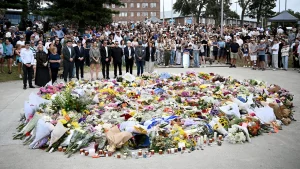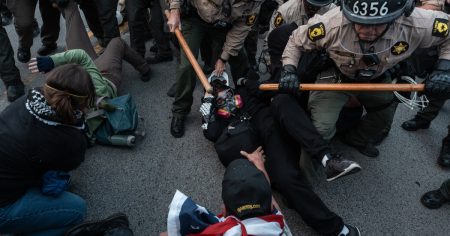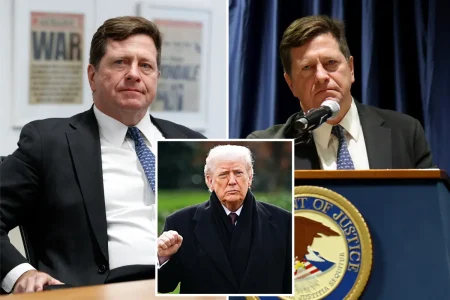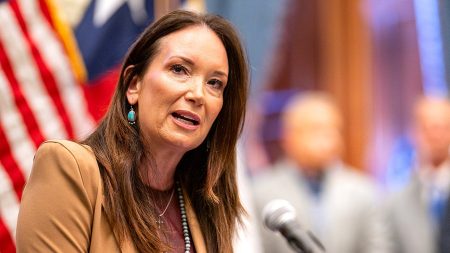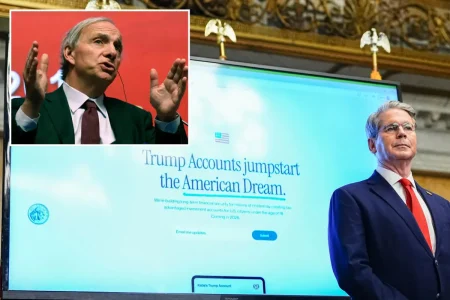North Korea’s Silence on Trump’s Proposed Kim Jong-un Summit Raises Diplomatic Questions
Pyongyang’s Calculated Pause: Understanding North Korea’s Non-Response to US Diplomatic Overtures
In a diplomatic landscape characterized by unpredictability, North Korea has maintained a conspicuous silence regarding former President Donald Trump’s recent proposals for another summit with leader Kim Jong-un. This reluctance to engage comes amid shifting geopolitical dynamics in the Korean Peninsula and raises significant questions about the future of U.S.-North Korean relations. Analysts suggest this hesitation reflects Pyongyang’s strategic calculation rather than simple disinterest, as the regime carefully weighs potential benefits against the risks of re-engaging with Washington under current circumstances.
The history of Trump-Kim diplomacy has been marked by dramatic swings between threats and reconciliation. Their previous meetings—in Singapore (2018), Hanoi (2019), and briefly at the Demilitarized Zone separating the two Koreas—represented unprecedented direct engagement between American and North Korean leadership. These historic summits initially sparked optimism about denuclearization and normalized relations, with images of handshakes and cordial exchanges dominating international headlines. However, substantive progress remained elusive, particularly after the collapse of the Hanoi summit when disagreements over sanctions relief and denuclearization sequencing brought negotiations to an abrupt halt. Despite the theatrical elements of their relationship, which Trump once characterized as “falling in love” through exchanged letters, tangible diplomatic achievements remained minimal as fundamental positions on both sides proved difficult to reconcile.
Historical Context: The Complex Evolution of Trump-Kim Diplomacy
North Korea’s current silence must be understood within a broader strategic framework that extends beyond personalities to core national interests. Kim Jong-un’s regime has consistently prioritized regime security and survival above all else, viewing its nuclear program as the ultimate guarantee against perceived external threats. This fundamental calculation has not changed despite the personal rapport Trump claimed to have established with Kim. “North Korea’s strategic interests haven’t fundamentally shifted,” explains Dr. Sung-Yoon Lee, Korea expert at Tufts University’s Fletcher School. “The regime values its nuclear deterrent above all else and will only engage in diplomacy when it sees concrete advantages without meaningful concessions on denuclearization.” This assessment is reinforced by North Korea’s continued development of missile technology and nuclear capabilities even during periods of diplomatic engagement, suggesting that Pyongyang views talks primarily as opportunities to gain international legitimacy and economic relief rather than paths to genuine disarmament.
The timing of Trump’s renewed interest in meeting Kim coincides with significant domestic political considerations in the United States. As campaign season intensifies, foreign policy achievements represent valuable political currency. Trump frequently cites his North Korea diplomacy as evidence of his unique ability to engage difficult adversaries through personal relationships rather than traditional diplomatic channels. However, this personalized approach has drawn criticism from foreign policy experts who argue it undermined institutional diplomatic processes while delivering few concrete results. Ambassador Christopher Hill, former U.S. negotiator with North Korea, notes: “Summitry without substantive working-level agreements rarely produces lasting outcomes. The theatrical aspects of the Trump-Kim meetings generated headlines but limited progress on core security issues.” This tension between diplomatic spectacle and substantive achievement continues to shape perceptions of Trump’s North Korean engagement strategy.
Strategic Calculations: Why Pyongyang Keeps Washington Waiting
North Korea’s calculated silence likely serves multiple strategic purposes beyond simple diplomatic reluctance. By withholding an immediate response to Trump’s overtures, Kim’s regime maintains positional advantage and communicates that engagement will occur on its terms rather than Washington’s timeline. This approach aligns with Pyongyang’s long-standing practice of strategic patience—waiting for concessions while continuing to advance its military capabilities. The regime has also demonstrated increasing confidence in its international position, particularly through strengthened ties with Russia and China, which provide economic lifelines and diplomatic cover against Western pressure. These relationships reduce North Korea’s dependency on U.S. engagement, allowing Kim to approach American diplomatic initiatives from a position of perceived strength rather than necessity.
Internal factors within North Korea further complicate diplomatic calculations. The country faces significant economic challenges exacerbated by self-imposed border closures during the COVID-19 pandemic, which dramatically reduced already limited trade. These pressures create competing incentives—potential interest in sanctions relief through diplomatic engagement versus reluctance to appear vulnerable by seeking international assistance. Dr. Victor Cha, Korea Chair at the Center for Strategic and International Studies, observes: “The regime must balance economic necessities against its ideological commitment to self-reliance and the appearance of strength. Any diplomatic engagement with the United States must be framed internally as a victory rather than a concession.” This delicate balancing act helps explain the measured, often delayed responses that characterize North Korea’s diplomatic approach.
Regional Implications: How North Korea’s Stance Affects Northeast Asian Security
The diplomatic standoff extends beyond bilateral U.S.-North Korean relations to affect regional security architecture throughout Northeast Asia. Japan and South Korea, key U.S. allies directly threatened by North Korea’s weapons programs, have deepened their security cooperation in response to continued missile tests and nuclear development. This trilateral alignment represents a significant shift in regional dynamics, particularly given historical tensions between Tokyo and Seoul. Meanwhile, China views North Korea through a complex strategic lens—valuing stability on its northeastern border while seeking to maintain influence over Pyongyang and prevent excessive American influence in the region. Beijing has consistently advocated for dialogue while opposing measures that might destabilize the Kim regime.
Russia’s deepening relationship with North Korea adds another layer of complexity to this regional security puzzle. Recent reports indicating North Korean troops may support Russian operations in Ukraine suggest a significant evolution in Pyongyang’s international relationships and potential new sources of economic and military support outside the U.S.-led sanctions regime. These developing partnerships reduce North Korea’s diplomatic isolation and potentially decrease incentives for engagement with Washington. Dr. Sue Mi Terry, former CIA analyst and Korea expert, suggests: “Kim Jong-un may calculate that he can wait out the current administration, diversify his international relationships, and potentially negotiate from a stronger position in the future. The urgency for dialogue simply isn’t there from Pyongyang’s perspective.”
Future Prospects: Potential Paths Forward in U.S.-North Korean Relations
As Washington awaits Pyongyang’s response, several potential scenarios emerge for future U.S.-North Korean relations. A renewed Trump-Kim summit would likely generate significant attention but faces the same fundamental obstacles that hindered previous negotiations—specifically, the gap between North Korea’s demand for sanctions relief and security guarantees versus U.S. insistence on verifiable denuclearization steps. Without substantial preparatory work at working levels to narrow these differences, another high-level meeting risks producing more spectacle than substance. Alternatively, North Korea might maintain its current approach of strategic silence interspersed with calibrated provocations designed to demonstrate capabilities without triggering military response.
The most constructive path forward likely involves realistic, incremental diplomacy focused on risk reduction rather than immediate denuclearization. This approach would acknowledge North Korea’s nuclear status as a near-term reality while working to freeze development, increase transparency, and gradually build confidence through reciprocal measures. However, such pragmatism faces significant domestic political obstacles in both countries, where maximalist positions often dominate public discourse. As Dr. Siegfried Hecker, former director of Los Alamos National Laboratory and expert on North Korea’s nuclear program, observes: “Complete, verifiable denuclearization remains the right long-term goal, but effective diplomacy requires interim steps that address both sides’ core security concerns while demonstrating good faith.” Whether leaders in Washington and Pyongyang possess the political will and flexibility to pursue such a measured approach remains the central question in this enduring diplomatic puzzle.

